 2020 is coming and it’s time to make a game plan for getting the best results possible for your body-transformation goals.
2020 is coming and it’s time to make a game plan for getting the best results possible for your body-transformation goals.
Most of my skinny-fat clients usually come to me after they have spent (wasted) a few years following shiny advice that promises the world and doesn’t deliver.
In this post, I’ll go over the top training and diet mistakes that I’ve seen people make in my 10 years of training myself and later hundreds of clients.
Here are the top training and diet mistakes you must avoid:
- Train heavy on the big 3 compound lifts (squat, deadlift and bench press): Train heavy 3 days per week for an hour with heavy compound lifts and get the same results as someone who trains for hours each day with high volume (because otherwise you will overtrain).
- Low carb diets: Cut out the carbs because they spike insulin, cause fat gain, bloating, water retention, fatigue.
- High protein diets: Eat a high protein diet otherwise you will lose lots of muscle.
- Intermittent fasting.
- Losing fat is all about Calories in vs Calories out.
- Diet is more important than training.
I’ll briefly go over how each of these messes you up and delivers sub optimal results.
Train heavy on the big 3 compound lifts (squat, deadlift and bench press)
I’ve covered this extensively over the last 7 years (especially in my viral post Why You Shouldn’t Do Starting Strength As A Beginner).
It’s not a sustainable approach to building a muscular physique if you’re starting from a skinny-fat starting point because heavy compound lifts done in the 1-5 rep range put a lot of stress on your endocrine and nervous system.
In order to recover and progress with this type of training, you need either a naturally thick bone-structure or you can compensate by eating lots of Calories.
This is why ALL success stories on Starting Strength and 5×5 type of programs are naturally fat guys with a big bone-structure underneath or skinny guys who can get away with eating lots of food to recover.
When skinny-fat guys follow this type of training, we find it hard to recover because:
- We have a naturally small bone-structure. This makes heavier weights much harder to recover from and we are more prone to get injured.
- We can’t compensate for our smaller bone-structure by loading up on the Calories because that will create a lot of excess fat gain.
There’s not a single skinny-fat to ripped transformation on these programs.
In 7 years of training people, I have never seen a skinny-fat guy achieve a great physique on a program revolving around heavy bench presses, squats and deadlifts.
Recently, I did video calls with my readers and one of my long-term readers (and success stories) Umar Alam told me that heavy weight programs such as Starting Strength and StrongLifts 5×5 are so terrible that they’ve turned into a meme.
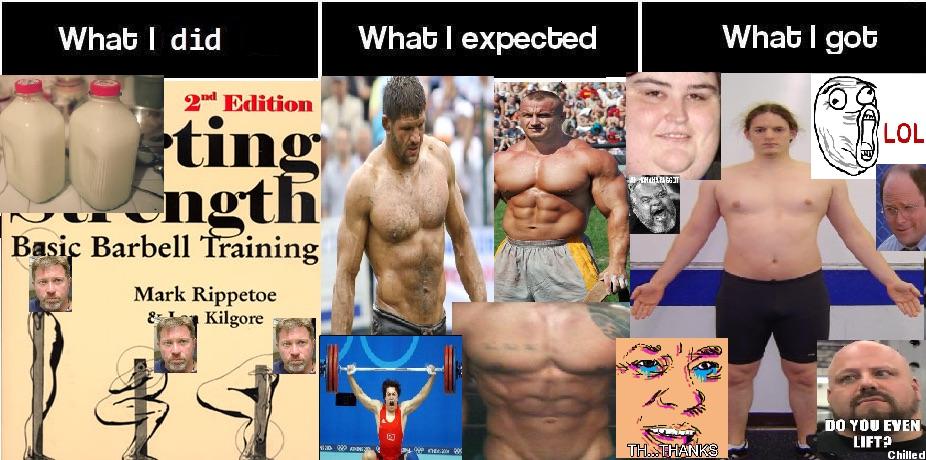
And rightfully so.
I personally did heavy weight programs for over a year and gained 782 pounds (355 KG) on my 4 main compound lifts but I got close to no muscle gains on the arms, shoulders, chest and back and ended up with high body-fat levels.
These programs are just not the way to go if you’re training for body-composition, therefore don’t waste your 2020 doing them.
In addition, everyone who trains for 5-10 years with heavy squats, bench presses and deadlifts ends up with a debilitating injury that follows them for life.
I haven’t met a single person who can train heavy on those lifts for that long and be completely injury free.
I see this all the time in my new clients’ assessments forms:
- “I followed StrongLifts 5×5 and got a back hernia from doing heavy deadlifts. It limits me from doing exercises such as deadlifts, bent over rows or going heavy on anything in general and I have persistent lower back pain throughout the day.”
- “I followed Starting Strength and got knee pain while going heavy on squats.”
- “I went heavy on bench presses and got a shoulder injury.”
Lower back, knee and shoulder injuries are the most common on the deadlift, squat and bench press and once you get one of those, it’s going to limit your training and life quality going forward.
Low carb diets, ketogenic diets, carnivore diets
Low carb diets. The current big trend in the fitness world together with veganism (the 2 opposite extremes).
I can tell you that I personally follow a low carb diet right now, but it’s only for health reasons.
After having an almost fatal lung blood clot (due to a rare genetic blood disorder combined with long flights), my body is not able to process carbs like I used to.
The point I’m trying to make is that a low carb diet is not designed for athletes and bodybuilders who want to maximize performance and muscle mass.
It’s designed for:
- Epilepsy sufferers.
- Morbidly obese people.
- Diabetics and pre-diabetics.
- People who have carb intolerance from diseases such as candida or irritable bowel syndrome.
- People that are very sick with autoimmune disorders or a weak mitochondria.
- People that have already built sufficient muscle mass and simply want to maintain it while maximizing longevity at the expense of training performance and an increased injury risk from training sessions.
If you’re in one of those groups or have another medical reason for doing a low carb diet under a doctor’s supervision, then definitely do it but be sure to monitor your lipid profile, thyroid and blood pressure and follow a healthy ketogenic diet where the vast majority of the fats come from anti-inflammatory unsaturated fats full of omega-3s and omega-9s (nuts, olive oil, fatty fish, avocado, dark chocolate) instead of inflammatory saturated fats full of omega-6s (red meat, bacon, butter) etc.
Following a ketogenic diet should not be an excuse for eating a highly inflammatory diet. (This is unfortunately the way most people get into the ketogenic diet. They are sold on the idea of eating unlimited amounts of steak and butter while losing weight).
With that said, there’s a good chance that you are not in one of the groups listed above, but instead you’re a skinny-fat guy with 20-50 pounds of excess body-fat and mostly good health (for now).
In this case, you’re able to eat a good amount of carbs as long as you choose healthy carb sources and exercise hard on an intelligent plan so those carbs can be directed towards muscle gain.
Prior to having the lung blood clot, I experimented with various diets for years and the only type of diet I could gain muscle on was a high carb diet.
I can tell you with certainty that all of the 50 pounds of muscle mass I gained was done while eating a high carb diet.
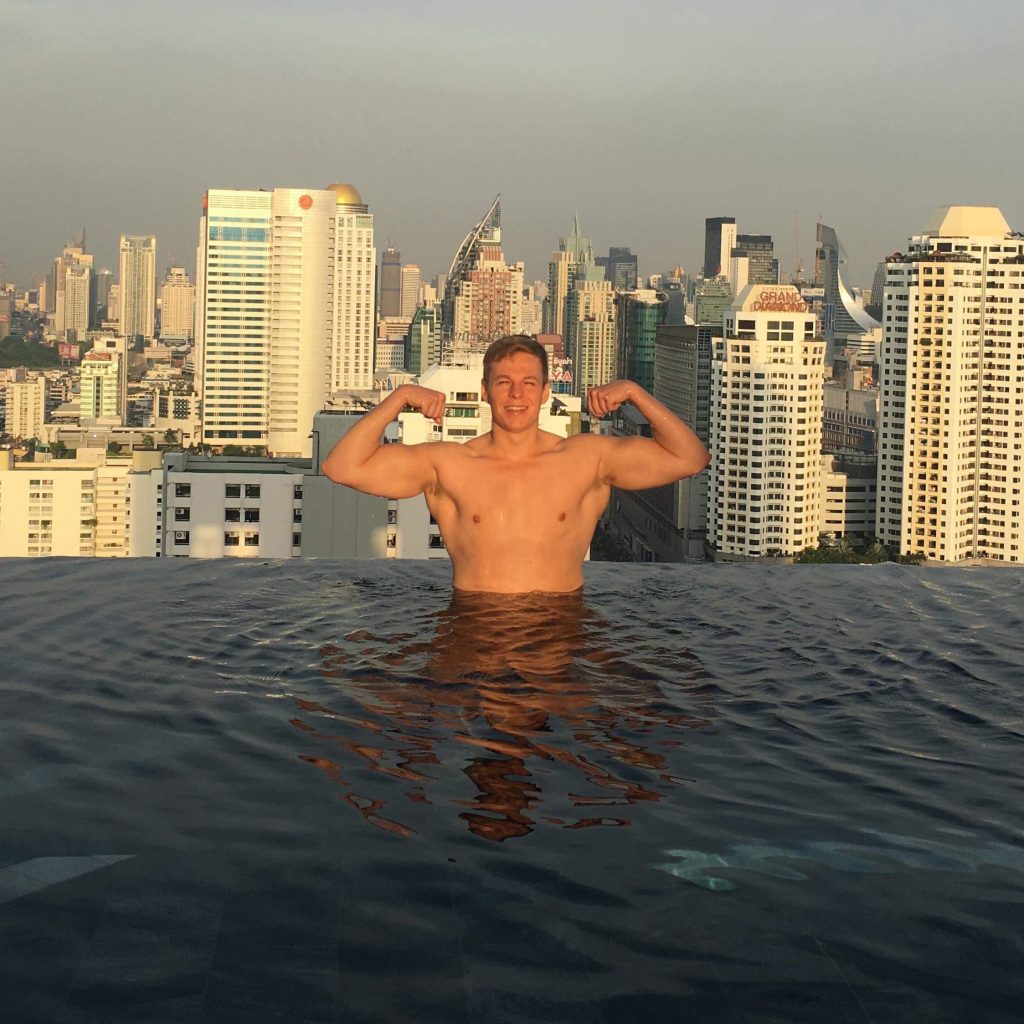
On a low carb diet, my training sessions were daunting to get through and the best I could do was retain as much muscle mass as possible.
My joints also didn’t feel good and I always felt like I was 1 rep away from getting injured.
The truth is that when you follow a low carb diet you may increase your longevity, but when you train hard you will find it much harder to recover and the risk of injury goes up a lot therefore you have to know what you’re doing training wise.
The reason to why carbs works so well for athletes and bodybuilders is because they spike insulin and insulin is one of the most anabolic hormones in the body.
By regularly spiking insulin, you put your body in a position where it can gain both muscle and fat mass and recover much faster between training sessions.
In addition to spiking insulin, carbs are the best fuel for training in the hypertrophy rep range (+6-20 reps), in the endurance rep ranges and when you train for power.
In other words, carbs are the best fuel for any type of resistance training except when you train with very low reps (1-5 reps) as seen in pure strength programs.
Most of the people who preach low carb diets as great for training, built their muscle with a high carb diet and later switched to a low carb diet to maintain it. They are highly biased and are either selling you something or have no idea what they’re talking about.
Therefore, if your goal is to build muscle mass, my advice is to include a good amount of carbs to support those muscle gains.
However, if your goal is to maintain muscle mass and maximize longevity, then lowering the carbs definitely makes sense since spiking insulin over and over again is bad for longevity.
The best overall strategy is to think of using a high carb diet as a medium term solution to build the muscle mass you need and once you have that muscle mass, cut back on the carbs and maintain it with a lower carb intake.
Also, keep in mind that the initial weight you lose on a low carb diet is mostly water weight.
When you reduce carbs, your body holds onto less water and that’s why you look so much leaner.
The low carb diet is a natural diuretic and requires a higher sodium and water intake to replenish lost electrolytes.
After you increase carbs back to normal levels, you regain all that water weight within a day or two.
Follow An Adequate Protein Diet Instead of a High Protein Diet
A sufficient protein intake is required to gain muscle mass and strength, however there’s no benefit in going above sufficient.
If your body needs 100 grams of protein to build muscle, strength and recover, eating 300 grams of protein won’t mean you will build more muscle.
There’s only so much protein your body can utilize and I personally found that I can build muscle mass just fine on 100-130 grams of protein when I’m a lean 200 pounds (90 KG).
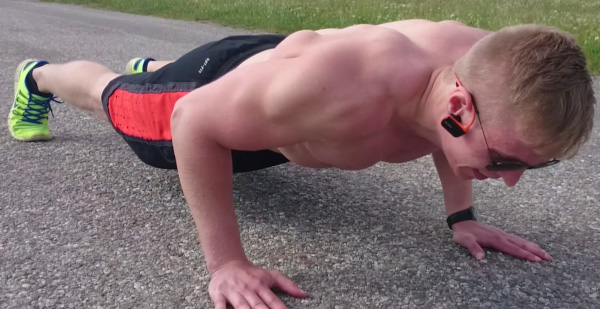
Even with crappy skinny-fat genetics and naturally low testosterone levels.
So why should you cut down on protein intake to sufficient levels?
- Eating a high protein diet is more likely to give you indigestion. If you persistently find yourself constipated, try cutting out the whey protein and switch out the lean meats with fatty fish and meat, and see what happens to your digestive health.
- When you eat less protein, you save money, meals are in general more delicious and you allow more space for carbs and fats, the protein sparing nutrients. The protein sparing nutrients are responsible for hormonal production in your body and that is key to get the best body-composition results.
The only reason why I would give someone a high protein diet is if they have a hard time staying satiated eating a diet moderate in protein and they have fat to lose.
In that case, increasing protein makes sense as long as they have no digestive issues or kidney issues with the increased protein intake.
Most People Do Intermittent Fasting The Wrong Way
Intermittent fasting proponents tell you that you will lose fat and have better mental focus when fasting in the morning.
This is definitely true for some people.
Some people feel great when they fast and find it more convenient to eat all their meals in an 8 hour eating window later in the day when all work has been done.
The most typical eating window I saw in my clients who tried IF was around noon or 1 PM until 8-9 PM.
However, most of the data we have available today shows that your body partitions nutrients best in the morning and eating a lot of food late at night is bad for your metabolism and hormonal production.
Ideally, you will eat according to your circadian rhythm, when the sun is strongest.
Your body operates based on light and absorbs nutrients best when the sun is strongest.
Then at night when your body is regulating the satiety hormone leptin, it does it best on an empty stomach.
Leptin is regulated at midnight, therefore you shouldn’t eat any food after 8 PM and it’s best if your dinner is small-moderate in size.
Ideally, you will eat 3 meals a day: big breakfast, medium lunch and small dinner.
By planning out your meals for 8 AM, 12 PM and 4 PM you will still get 16 hours of fasting per day as advised by most intermittent fasting regimens, but you will not eat before bed time which is horrible for the regulation of your hormones.
Also, keep in mind that given that Calories are equal, doing intermittent fasting usually results in no additional fat loss over the short-medium term, however it’s proven that fasting has great benefits for longevity, digestion, hormonal production and appetite control, therefore over the long term it’s definitely a great tool for staying lean.
Calories In vs Calories Out Isn’t Guaranteed To Work
The whole idea of Calories vs Calories out works decently well in the context of someone who has a healthy metabolism and hormonal balance.
But there’s a good chance if you’re skinny-fat and reading this that you have low testosterone levels and a slow metabolism.
This requires a focus on hormonal optimization rather than Calories.
If Calories in vs. Calories out worked so well, then:
- Why is most of the American population increasingly obese despite an increased focus on the Caloric content of foods during the last 20 years?
- Why do a lot of middle aged and old people have huge amounts of body-fat despite eating relatively small portion sizes?
You see… the key to long-term fat loss is not counting Calories.
It’s getting good sleep and eating nutritious foods.
All of your fat loss, muscle building and recovery happens in the night time when you sleep.
Most of your hormones are produced from midnight until you wake up.
When you eat late and sleep late, you disrupt all those metabolic and hormonal processes.
Over the long-term, a poor sleeping regimen pretty much cancels out a good diet plan because of the huge stress on the body.
You’re essentially in an under-recovered state and you become leptin resistant, have a lower testosterone production and ghrelin increases:
- Low testosterone: Testosterone is the main muscle building hormone in the body. With low testosterone levels you won’t be able to build muscle mass no matter how you train and eat. The #1 sign of low testosterone is a lack of morning wood most days of the week. Not waking up with morning wood 4 or more days per week? You definitely have low testosterone.
- Leptin resistance: Leptin resistance means that you get less satiety out of food and thereby you end up overeating. When you have lots of excess body-fat, your body should in theory crave less food because the excess body-fat can be used for energy, however with leptin resistance the signalling in your brain is off therefore someone with leptin resistance will be more hungry than someone without. Leptin is produced around midnight when you’re sleeping, but only if you didn’t eat 3-4 hours before sleeping.
- High ghrelin: Ghrelin is another hunger hormone. This hormone is controlled while sleeping. When you sleep late or don’t sleep enough, you end up with high ghrelin levels, and thereby crave sugar and junkfood more.
When you combine these 3 hormonal factors, you end up with a person that has low energy levels, low motivation, low sex drive, low drive to get things done, fatigue, inability to gain muscle mass and a tendency to overeat despite having excess body-fat.
These hormones completely deplete your will power and makes training and dieting an uphill battle.
The key is to consume nutritious foods that satiate you to the point where you don’t crave junkfood and sugar.
For example, I used to crave sugary snacks, white bread and chocolate all my life.
As a teenager I could often finish an entire loaf of white bread by myself for one meal and another meal I could down an entire half kilo nutella jar. I wouldn’t be surprised if I got in more than 5000 Calories per day for years.
When I followed a high protein, high carb, low fat bodybuilding diet, I still craved all those things (although to a lesser degree) and couldn’t stick to my diet.
Then I switched to a more balanced and nutritious diet plan with lots of vegetables, fruits and nuts and over time all my cravings went away.
Combined with good sleep, this made my diet almost effortless to stick to.
And this is the key to long-term fat loss: Making your fat loss sustainable.
Getting in healthy fats, adequate protein and quality carbs with each meal makes sure that you don’t overeat and crave all the sugar and junkfood.
Most cravings for bad foods are a result of vitamin and mineral deficiencies.
When you eat nutritious food, you kill vitamin and mineral deficiencies and thereby kill cravings as well.
Here’s a good graphic I found online summarizing the deficiencies that fit each craving:

The graphic above shows why it’s important to eat a diet that has a variety of foods.
By eating a variety of foods, you completely kill of cravings for junkfood, chocolate and sugar.
This is why I include over 115 healthy food options in my clients’ diet plans.
I want them to eat a variety of foods so they get in all the necessary nutrients for optimal hormone production and satiety.
Remember, 90% of people who lose fat end up regaining all of it within 5 years.
Why? Because they focus on restricting Calories, restricting carbs, restricting healthy fats instead of eating a more nutritious diet with most of their food in the morning and afternoon and sleeping early.
If you don’t want to become part of that statistic, be sure to diet off the fat the right way.
Training Is More Important Than Diet For Body-Composition
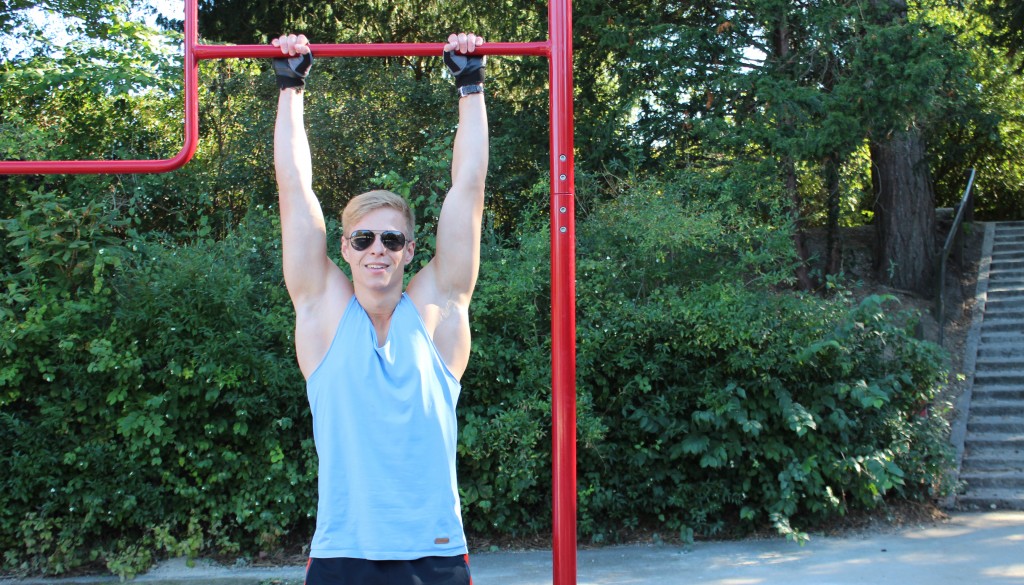
Finally, there’s the whole idea today that abs are made in the kitchen and that your diet is more important than training.
While both training and diet are important, diet alone won’t improve your body-composition unless you’re extremely fat and have a lot to lose.
If you take a typical skinny-fat guy and make him diet off the fat, he will just become a smaller version of his current self.
There will be no muscle tone (because no muscle was built in the first place) and his proportions won’t change.
If you want to look better, you have to focus on bodybuilding training because it sculpts the body.
You have to focus on exercises that will increase the size and tonality of your lats, chest, shoulders, biceps and triceps.
This will create that V-tapered look with powerful arms and round shoulders that every guy wants.
Diet alone will never do that.
Diet can be used to make you lean and stay lean, but training is used to radically change your body-composition.
Training helps you direct the Calories you eat into muscle gains rather than making them get stored as fat.
Here are some general guidelines for structuring a good training program:
- Train as much as possible. Don’t worry about overtraining. It’s very unlikely that you will overtrain even if you exercise for 2 hours per day. The more you train, the better your results will be. The key is to build up gradually and listen to your body. And cut out exercises that don’t agree with your body and cause any kind of pain or joint discomfort.
- Train like a bodybuilder and not strength athlete or powerlifter. This means using higher reps (usually 7-15 reps per set and even up to 20-30 reps on some exercises) and using a variety of techniques to achieve maximum muscle gains. The 3 staple techniques are: Slow and heavy reps (to build strength), light explosive reps (to build power) and moderate controlled reps (to achieve hypertrophy).
- Choose mostly compound exercises that fit your body well, target the right muscles and that you feel good doing. E.g. tall guys may choose the leg press over the squat due to have very long femurs compared to the torso which puts them in an awkward position at the bottom of the squat and for shoulders, choose shoulder isolation movements rather than heavy presses since your strength potential will generally be low on the presses due to long arms and skinny wrists which make pressing uncomfortable.
- Stay hydrated when training. Eat enough salt, eat enough carbs and drink enough water to fill up your glycogen stores and prevent injuries when training hard. Don’t make the mistake of cutting out salt and carbs to reduce water retention when doing hard training. This can get you seriously injured. Your body needs the water for peak performance.
- Eat a balanced and varied diet with healthy nutritious foods to get lean, stay lean and keep sugar cravings away. Include a variety of vegetables, fruits and nuts since these are highly nutritious foods.
- You want to train off the Calories and keep the nutrition. Remember, if you train more, you can get away with eating more and that goes even more for people who switch from junkfood to clean food. The key to change body-composition is to increase your training and nutrition. Not decrease!
- Sleep early and sleep well to let your body regulate all the necessary body-composition hormones such as testosterone, leptin and ghrelin and so you can recover for tomorrow’s training session.
- Don’t worry about eating post-workout if you happen to train late in the day. As long as you eat enough food throughout the morning and afternoon, you don’t need to eat post-workout.
These are the 8 keys to get into peak physical shape in 2020.
Don’t fall for shortcuts promoted by fitness marketers.
Intermittent fasting alone won’t get you lean.
Especially if you fast in the mornings and early afternoons.
Doing heavy bench presses, squats and deadlifts and sticking to low reps is not optimal or necessary to reach the maximum amount of muscle mass that your body can carry.
High protein diets are not optimal in most cases. (And definitely cut out the whey protein since it’s a byproduct of dairy and dairy is estrogenic).
Focus on getting good sleep and eating a nutritious diet instead of Calories in vs. Calories out.
And if you want everything to be 100% dialled in so you can get your best results, be sure to apply for my Online Transformation Program For Skinny-Fat Guys. New spots are opening in early 2020.
Be proud but stay hungry!
Oskar Faarkrog ISSA Certified Personal Trainer
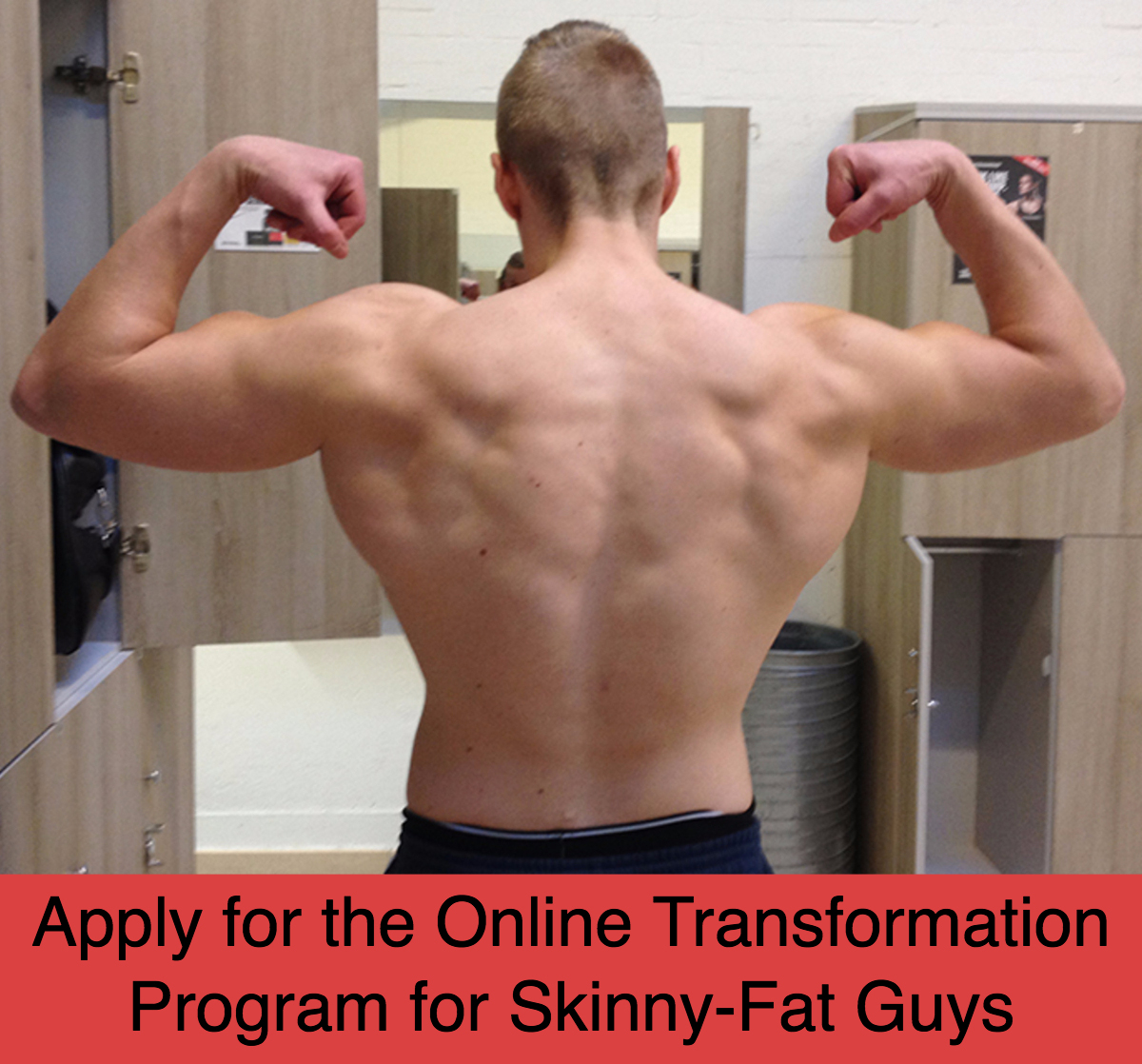 Read my free 50 page guide "The 2 Phases of a Skinny-Fat Transformation"
Read my free 50 page guide "The 2 Phases of a Skinny-Fat Transformation"